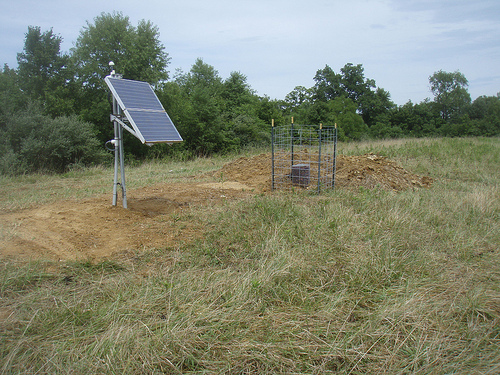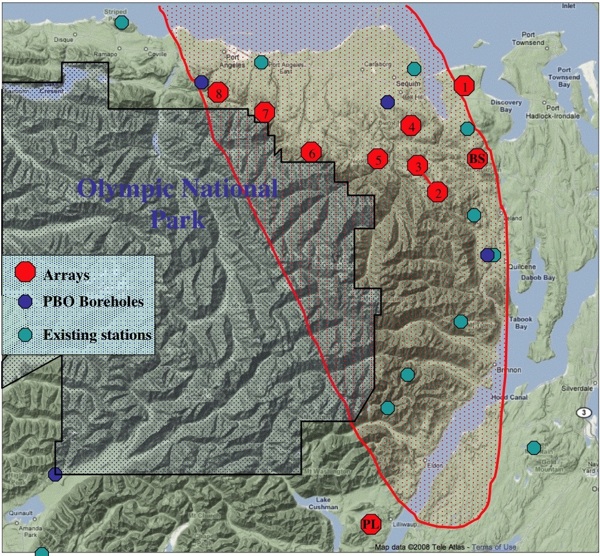P52A
Corning, OH, USA
The USArray component of the NSF-funded EarthScope project ended its observational period in September 2021 and all remaining close-out tasks concluded in March 2022. Hundreds of seismic stations were transferred to other operators and continue to collect scientific observations. This USArray.org website is now in an archival state and will no longer be updated. To learn more about this project and the science it continues to enable, please view publications here: http://usarray.org/researchers/pubs and citations of the Transportable Array network DOI 10.7914/SN/TA.
To further advance geophysics support for the geophysics community, UNAVCO and IRIS are merging. The merged organization will be called EarthScope Consortium. As our science becomes more convergent, there is benefit to examining how we can support research and education as a single organization to conduct and advance cutting-edge geophysics. See our Joining Forces website for more information. The site earthscope.org will soon host the new EarthScope Consortium website.




Principal Investigators and Institutions: 
Kenneth Creager, University of Washington
John Vidale, University of Washington
Heidi Houston, University of Washington
Funding Source:
NSF EarthScope
Field Dates:
5/2009 – 3/2012
Equipment Used:
Mark Products L28/Reftek 130 Datalogger
Geospace/Reftek 130 Datalogger
TEXANS
Data Status:
Recieved last service January 11, 2012
Network Code:
XG
Description:
In the last 10 years, a strange way for faults to slip has been observed. Rather than regular earthquake fault slip in a matter of seconds or steady deformation, both of which have been known to occur for decades, large parts of deep faults move unsteadily over the course of days or weeks, then stop moving for months to years before lurching in slow motion again.
This new mode of sporadic coupled deformation and weak seismic radiation is termed Episodic Tremor and Slip (ETS) has been discovered in several subduction zones. It recurs episodically down-dip from the locked portion of the Cascadia megathrust about every 14 months. The close relationship and likely interaction of the ETS zone with the locked and hazardous portions of subduction zones mandate better understanding of the ETS phenomena.
The Array of Arrays project is a comprehensive study of many of the key questions surrounding ETS utilizing a temporary seismic deployment designed to image Cascadia Subduction Zone tremor in unprecedented detail. Specifically, a set of arrays are being deployed on the Olympic Peninsula to record the ETS events occurring during Summer 2009 and Fall 2010, comprising one 40-station array, six 20-station arrays, and a line of stations connecting two of the arrays. There is also a backbone set of 15 short-period and 7 broadband continuously recording seismometers.
The Array of arrays is unveiling the spatio-temporal details of the tremor location and depth, its migration, its spectral content at high frequencies, as well as better resolution of tremor and low-frequency earthquake source character. Analysis of the data from this unique array will answer many key questions about tremor and further elucidate the physics of the ETS process, and provide answers to vexing issues of Cascadian earthquake hazard mitigation.
Publications/ Abstracts
Ghosh, A, J. E. Vidale, J. R. Sweet, K. C. Creager, A. G. Wech, H. Houston, and E. E. Brodsky. "Rapid, continuous streaking of tremor in Cascadia," Geochem., Geophys., Geosyst, v.11, 2010.
Ghosh, A., J. E. Vidale, J. R. Sweet, K. C. Creager, A. G. Wech, and H. Houston. "Tremor bands sweep Cascadia," Geophys. Res. Lett., v.37, 2010, p. 1.
Ghosh, A., J. E. Vidale, J. R. Sweet, K. C. Creager, and A. G. Wech. "Cascadia revealed by seismic array analysis,," Geophys. Res. Lett., 2009.